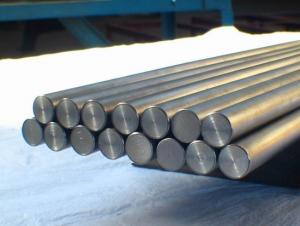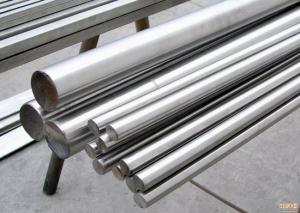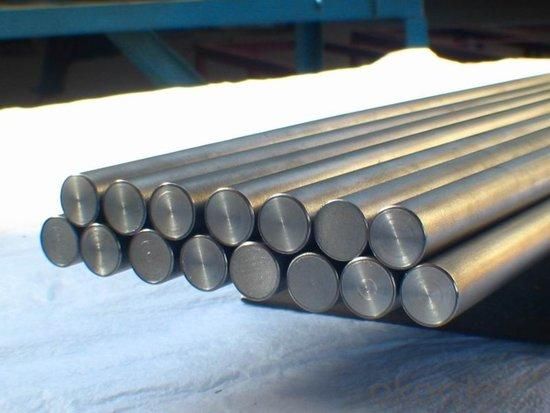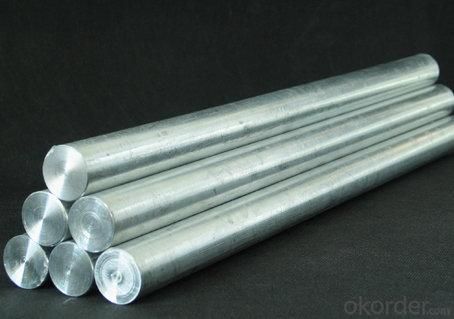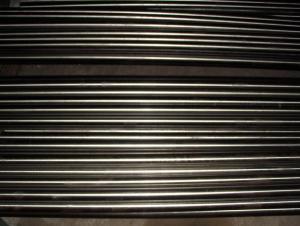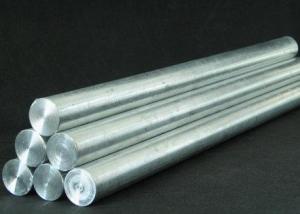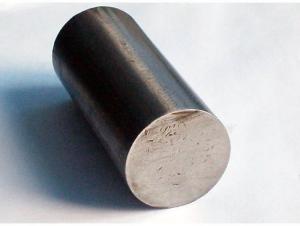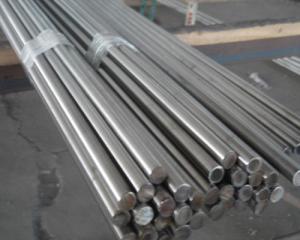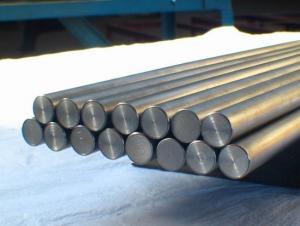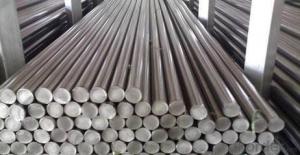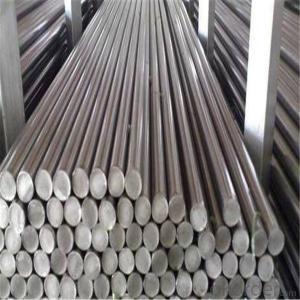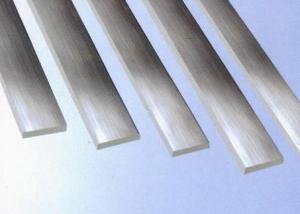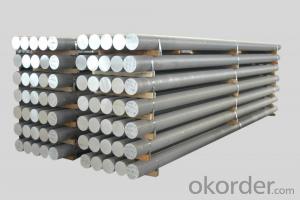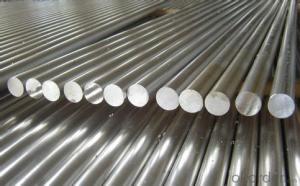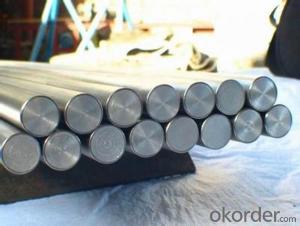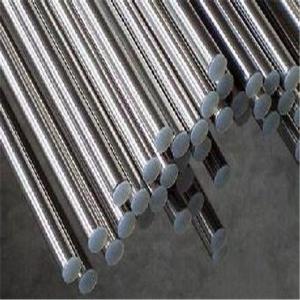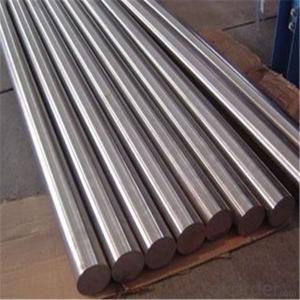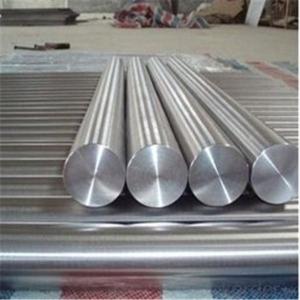316L Stainless Steel Bar
- Loading Port:
- China Main Port
- Payment Terms:
- TT or LC
- Min Order Qty:
- 5 Tons m.t.
- Supply Capability:
- 1000 Tons Per Month m.t./month
OKorder Service Pledge
OKorder Financial Service
You Might Also Like
Stainless Steel Bar
Stainless Steel Round Bright Bar
Hot-rolled Stainless Steel Black Bar
Grades:201、202、301、302、303、304、316、316L、321 etc
|
Diameter (mm) |
weight (kg/m) |
Diameter (mm) |
weight (kg/m) |
Diameter (mm) |
weight (kg/m) |
Diameter (mm) |
weight (kg/m) |
|
2 |
0.025 |
14 |
1.221 |
30 |
5.607 |
50 |
15.575 |
|
3 |
0.056 |
15 |
1.402 |
32 |
6.38 |
55 |
18.846 |
|
4 |
0.1 |
16 |
1.595 |
34 |
7.202 |
60 |
22.428 |
|
5 |
0.156 |
18 |
2.019 |
35 |
7.632 |
65 |
26.322 |
|
6 |
0.224 |
19 |
2.249 |
36 |
8.074 |
70 |
30.527 |
|
7 |
0.305 |
20 |
2.492 |
38 |
8.996 |
75 |
35.044 |
|
8 |
0.399 |
22 |
3.015 |
40 |
9.968 |
80 |
39.872 |
|
9 |
0.505 |
24 |
3.588 |
42 |
10.99 |
85 |
45.012 |
|
10 |
0.623 |
25 |
3.894 |
45 |
12.616 |
90 |
50.463 |
|
11 |
0.754 |
27 |
4.542 |
46 |
13.183 |
95 |
56.226 |
|
12 |
0.897 |
28 |
4.884 |
48 |
14.354 |
100 |
62.3 |
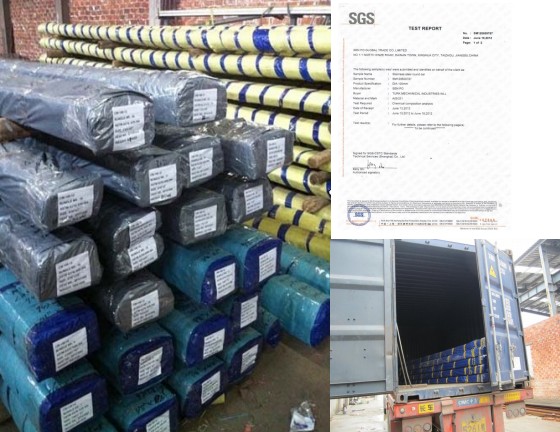
- Q: Can stainless steel bars be used in paper production machinery?
- Yes, stainless steel bars can be used in paper production machinery. Stainless steel is known for its excellent corrosion resistance and durability, which makes it an ideal material for various applications, including the paper industry. Stainless steel bars can be used in paper production machinery for tasks such as holding, guiding, or supporting various components of the machinery. Additionally, stainless steel bars are easy to clean, maintain, and can withstand high temperatures and harsh chemicals often used in the paper production process. Therefore, they are a reliable choice for ensuring the smooth operation and longevity of paper production machinery.
- Q: Are stainless steel bars resistant to embrittlement by hydrogen?
- Yes, stainless steel bars are generally resistant to embrittlement by hydrogen. Stainless steel is known for its high corrosion resistance and can withstand exposure to various corrosive environments, including hydrogen. However, it is important to note that the resistance to hydrogen embrittlement can vary depending on the specific grade and composition of the stainless steel. Certain grades of stainless steel, such as austenitic stainless steels, are more resistant to embrittlement by hydrogen compared to others. Additionally, factors such as temperature, pressure, and hydrogen concentration can also influence the susceptibility of stainless steel to embrittlement. Therefore, it is crucial to carefully select the appropriate stainless steel grade and consider the specific operating conditions to ensure optimal resistance to hydrogen embrittlement.
- Q: Are stainless steel bars suitable for pharmaceutical storage cabinets?
- Yes, stainless steel bars are suitable for pharmaceutical storage cabinets. Stainless steel is highly resistant to corrosion, making it ideal for storing pharmaceuticals, which often require sterile and clean environments. Additionally, stainless steel is durable and easy to clean, further ensuring the safety and integrity of the stored medications.
- Q: Can stainless steel bars be used in the chemical aftermarket?
- Yes, stainless steel bars can be used in the chemical aftermarket. Stainless steel is known for its excellent corrosion resistance, making it suitable for use in chemical environments where exposure to corrosive substances is common. Additionally, stainless steel bars are available in various grades, each with its own specific chemical composition and properties, allowing them to be selected based on the specific requirements of the chemical application. This versatility, coupled with the durability and strength of stainless steel, makes it a popular choice for use in the chemical aftermarket.
- Q: Are stainless steel bars suitable for surgical instruments?
- Indeed, surgical instruments find stainless steel bars to be appropriate. Surgical instruments prefer stainless steel as their material of choice owing to its exceptional resistance against corrosion, remarkable strength, and enduringness. Its resistance against staining and rusting is of utmost importance in maintaining the sterility and cleanliness of surgical instruments. Moreover, stainless steel possesses a sleek surface, facilitating effortless cleaning and sterilization. Furthermore, its non-magnetic nature plays a vital role in specific surgical procedures. In conclusion, stainless steel bars offer the essential qualities required to guarantee the dependability and efficiency of surgical instruments.
- Q: Can stainless steel bars be used in the aerospace industry?
- Yes, stainless steel bars can be used in the aerospace industry. Stainless steel is widely used in aerospace applications due to its high strength, corrosion resistance, and ability to withstand high temperatures. It is commonly used in aircraft components such as fasteners, fittings, and structural parts where durability and reliability are vital.
- Q: Can stainless steel bars be used in the manufacturing industry?
- Yes, stainless steel bars can be used in the manufacturing industry. Stainless steel is a versatile material known for its strength, durability, and corrosion resistance. These properties make it ideal for various applications in the manufacturing industry, such as machinery, equipment, and structural components. Stainless steel bars can be used to fabricate parts, frames, supports, and other components that require high strength and resistance to harsh environments. Additionally, stainless steel bars can be easily machined, welded, and formed, allowing for customization and flexibility in manufacturing processes. Overall, stainless steel bars are widely used in the manufacturing industry due to their exceptional properties and versatility.
- Q: What are the different types of stainless steel bar surface treatments for improved aesthetics?
- There are several types of stainless steel bar surface treatments for improved aesthetics, including mirror polish, brushed finish, bead blast, and electroplating.
- Q: How strong are stainless steel bars?
- Stainless steel bars are known for their exceptional strength. With high tensile and yield strengths, they are capable of withstanding heavy loads and extreme conditions, making them highly durable and reliable in various applications.
- Q: How do stainless steel bars resist embrittlement?
- Stainless steel bars resist embrittlement due to their high chromium content, which forms a protective oxide layer on the surface. This oxide layer acts as a barrier, preventing oxygen and moisture from reaching the steel and causing corrosion. Additionally, the presence of other alloying elements such as nickel and molybdenum enhances the steel's resistance to embrittlement, making it more durable and less prone to cracking or becoming brittle over time.
1. Manufacturer Overview
| Location | Jiangsu, China |
| Year Established | 2010 |
| Annual Output Value | above US$8 million |
| Main Markets | East Asia, Middle East, West Europe |
| Company Certifications |
2. Manufacturer Certificates
| a) Certification Name | |
| Range | |
| Reference | |
| Validity Period |
3. Manufacturer Capability
| a) Trade Capacity | |
| Nearest Port | Shanghai |
| Export Percentage | |
| No.of Employees in Trade Department | above 50 people |
| Language Spoken: | English, Chinese, Arabic |
| b) Factory Information | |
| Factory Size: | about 15000 square meter |
| No. of Production Lines | above 4 |
| Contract Manufacturing | OEM Service Offered,Design Service Offered |
| Product Price Range | Average |
Send your message to us
316L Stainless Steel Bar
- Loading Port:
- China Main Port
- Payment Terms:
- TT or LC
- Min Order Qty:
- 5 Tons m.t.
- Supply Capability:
- 1000 Tons Per Month m.t./month
OKorder Service Pledge
OKorder Financial Service
Similar products
Hot products
Hot Searches
Related keywords
